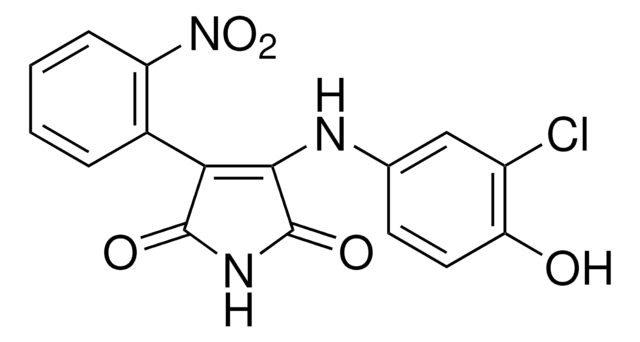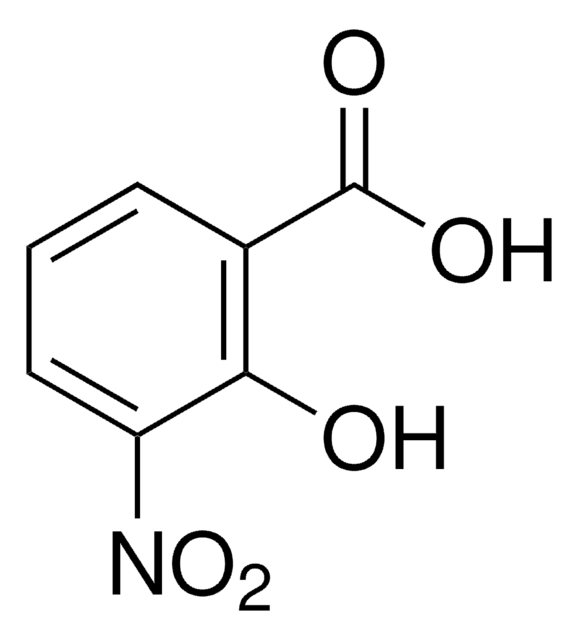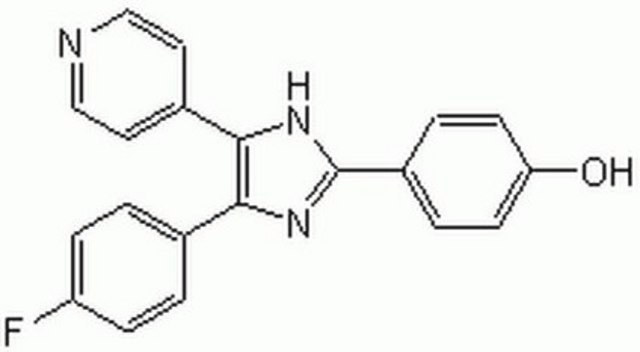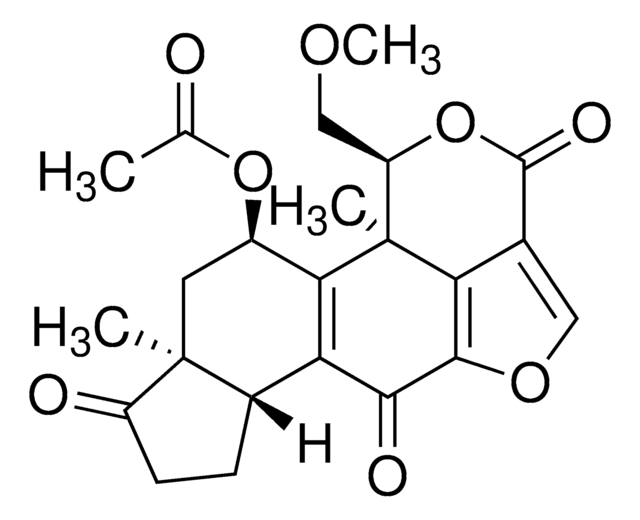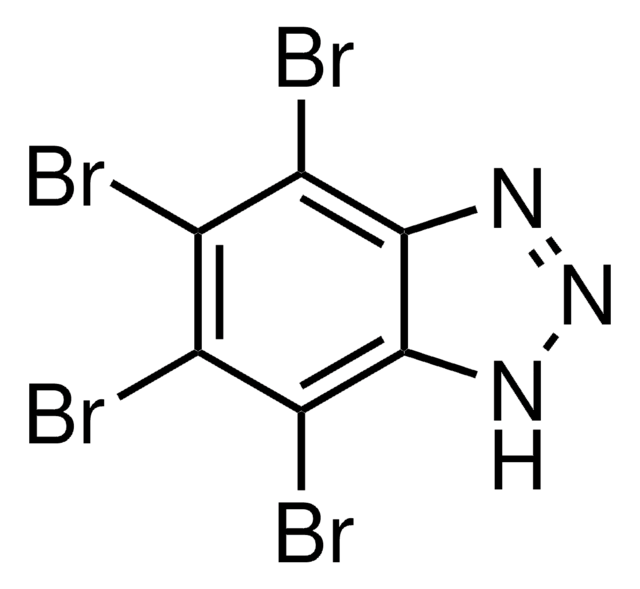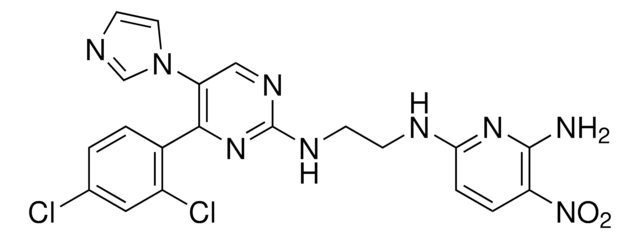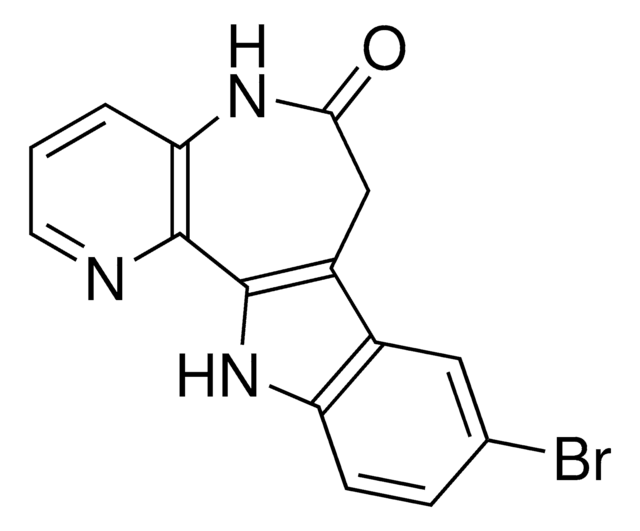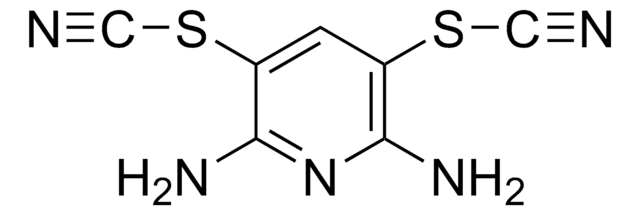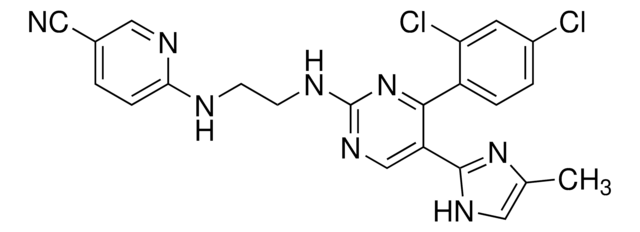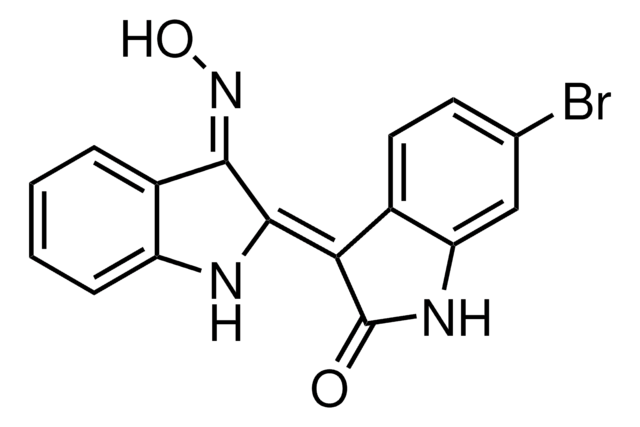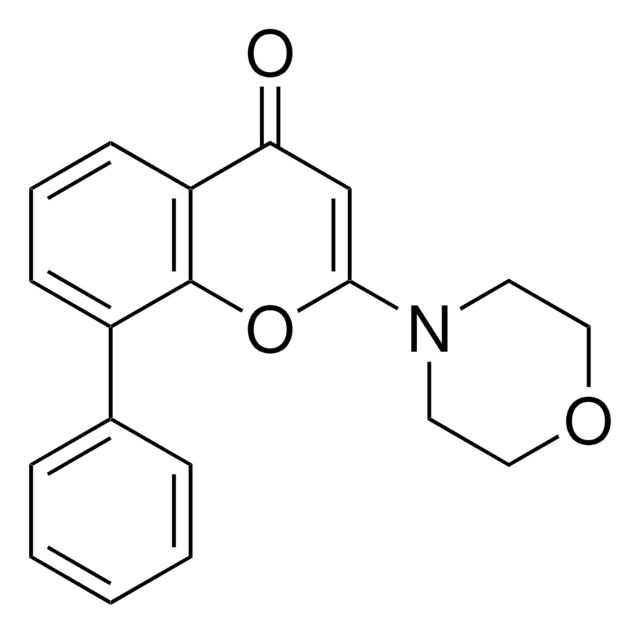A3230
AR-A014418
≥98% (HPLC), solid
Synonym(s):
N-(4-Methoxybenzyl)-N′-(5-nitro-1,3-thiazol-2-yl)urea
About This Item
Recommended Products
Quality Level
assay
≥98% (HPLC)
form
solid
color
off-white to tan
solubility
DMSO: ≥20 mg/mL, clear, light yellow
H2O: insoluble
originator
AstraZeneca
storage temp.
2-8°C
SMILES string
COc1ccc(CNC(=O)Nc2ncc(s2)[N+]([O-])=O)cc1
InChI
1S/C12H12N4O4S/c1-20-9-4-2-8(3-5-9)6-13-11(17)15-12-14-7-10(21-12)16(18)19/h2-5,7H,6H2,1H3,(H2,13,14,15,17)
InChI key
YAEMHJKFIIIULI-UHFFFAOYSA-N
General description
Application
Biochem/physiol Actions
Features and Benefits
Storage Class
11 - Combustible Solids
wgk_germany
WGK 3
ppe
dust mask type N95 (US), Eyeshields, Gloves
Certificates of Analysis (COA)
Search for Certificates of Analysis (COA) by entering the products Lot/Batch Number. Lot and Batch Numbers can be found on a product’s label following the words ‘Lot’ or ‘Batch’.
Already Own This Product?
Find documentation for the products that you have recently purchased in the Document Library.
Customers Also Viewed
Articles
Cancer stem cell media, spheroid plates and cancer stem cell markers to culture and characterize CSC populations.
Our team of scientists has experience in all areas of research including Life Science, Material Science, Chemical Synthesis, Chromatography, Analytical and many others.
Contact Technical Service